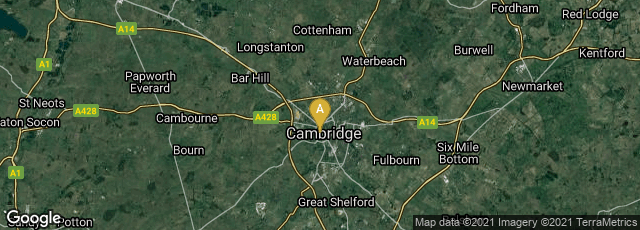

A: Cambridge, England, United Kingdom
With R. A. Fisher and Sewall Wright, British-born geneticist and evolutionary biologist John Burdon Sanderson Haldane (J.B.S. Haldane) developed the mathematical theory of population genetics. In 1924 Haldane began publication of his "Mathematical Theory of Natural and Artificial Selection." The first part appeared in the Transactions of the Cambridge Philosophical Society 23 (1924) 19-41. Parts II through IX appeared in the Proceedings of the Cambridge Philosophical Society from 1924 to 1932. The tenth and final part, "Some Theorems on Natural Selection," appeared in Genetics 19 (1934) 412-429.
In "A Mathematical Theory of Natural and Artificial Selection" Haldane showed the direction and rates of change of gene frequencies. He also pioneered investigation of the interaction of natural selection with mutation and with migration.
In 1932 Haldane issued a book, The Causes of Evolution, summarizing these results for a wider audience, and including the majority of his mathematical treatment of the subject in an extensive appendix. This body of work was a component of what came to be known as the "modern evolutionary synthesis", re-establishing natural selection as the premier mechanism of evolution by explaining it in terms of the mathematical consequences of Mendelian genetics.
In December 2013 when I wrote this entry parts 1 and 10 of Haldane's "Mathematical Theory...." were available at the links provided above, along with part V, which was available at this link. The remaining parts were available to subscribers from the Cambridge Journals website.
J. Norman (ed) Morton's Medical Bibliography 5th ed (1991) no. 254.